Fruit & Spice Park: A Miami-Dade Heritage Park
Introduction
Text-to-speech Audio
The 37-acre Preston B. Bird and Mary Heinlein Fruit & Spice Park showcases more than 500 varieties of exotic fruits, herbs, spices, and nuts, including 180 varieties of mangos. The Park is part of the Redland Historic District and also home to a 1906 schoolhouse used as the Welcome Center, and the Bauer-Neill Mitchell House which serves as a café. The Welcome Center has a nicely stocked gift shop filled with tropical treats as well as educational information about the area, its history, and the many fruits and spices grown. It offers an excellent educational experience for children. The Mango Café is famous for its twin lobster rolls.
The Park offers guided tram tours daily as well as a self-guided walking tour map, classes, and workshops. The Park is accessible and has wheelchairs available. Strollers can easily navigate the paths. Cost is $10 for adults, $6 for children 6-11, and under 6, free.
Images
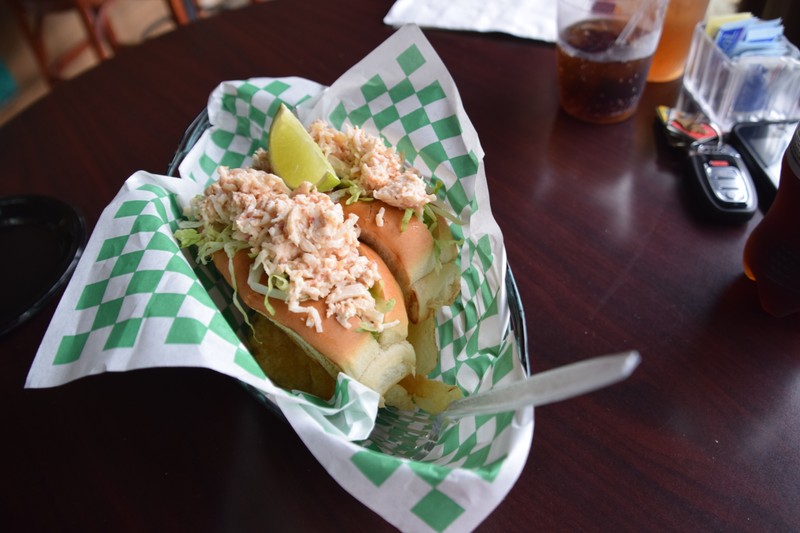
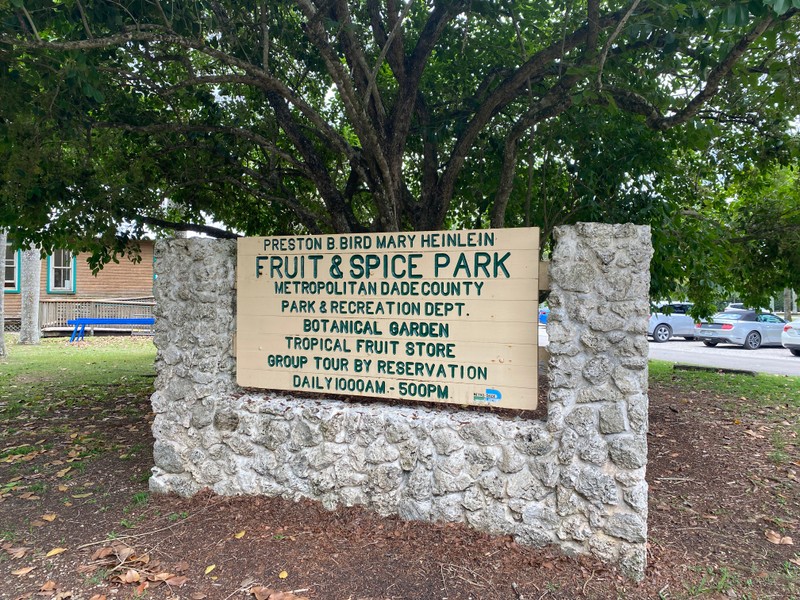
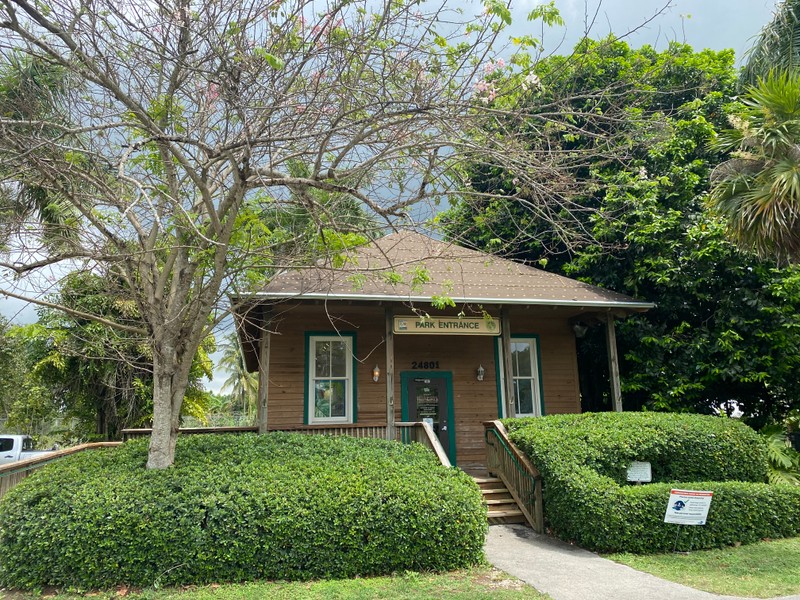
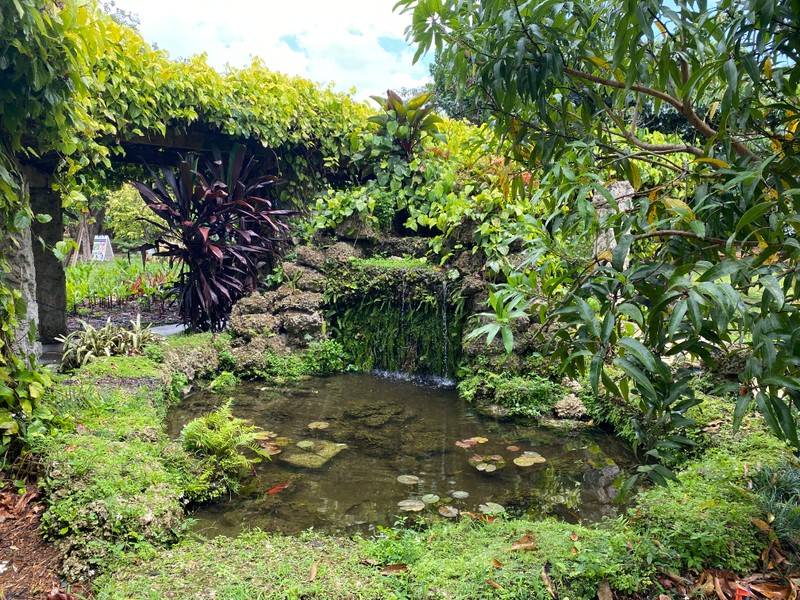
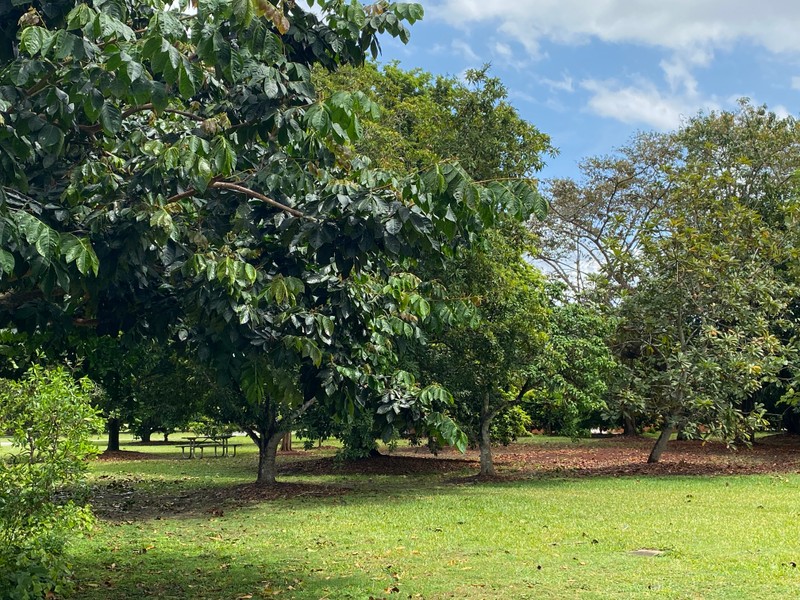
Backstory and Context
Text-to-speech Audio
In 1935, Mary Calkins Heinlein, born into a pioneer Redland family, convinced the County to begin efforts to purchase 18 acres in Redland, the first lasting settlement in south Miami-Dade. Heinlein had a life-long fascination with the exotic fruits and plants that could be grown in the area and she and her husband owned a small nursery. William Lyman Philips was hired to create landscape plans for the garden. Philips was the landscape architect and designer of the nearby Fairchild Tropical Botanic Garden. Design plans were completed in 1944, and Heinlein was named the first superintendent of the Preston B. Bird and Mary Heinlein Fruit and Spice Park.
The Mango Café is housed in the Bauer-Neill Mitchell House. The original 1902 home was moved to the Park from eight miles away and is an example of a typical Redland pioneer home. Both the pioneer home and the 1906 one-room schoolhouse (Welcome Center) were completely destroyed during Hurricane Andrew but were meticulously replicated as you see today. A coral rock building dating from around 1913 was the only surviving historic building on the site after Andrew devastated the area in 1992. The building was originally a lab used for citrus canker research.
Within the now enlarged Park, there are more than 500 varieties of exotic fruits, herbs, spices, and nuts from around the world; 180 varieties of mangos; 70 varieties of bamboo; 40 varieties of bananas; 15 varieties of jackfruit trees, a herb and vegetable garden, and African Baobob trees. Visitors are allowed to sample fallen fruit, but may not pick any from trees or plants. Arrangements can also be made for collecting seeds and cuttings suitable for planting.
Sources
Buchsbaum, Karen. Can You Name Miami-Dade's Seven Heritage Parks?. August 1st 2018. 32 - 33.
Miami-Dade County. Fruit & Spice Park. Accessed March 10th 2022. https://redlandfruitandspice.com/what-to-expect/history/.
